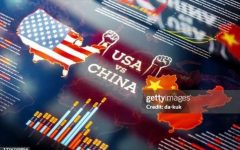Laughing At Authority: Memes As A Tool For Political Subversion
July 21, 2025 2025-07-21 9:32Laughing At Authority: Memes As A Tool For Political Subversion
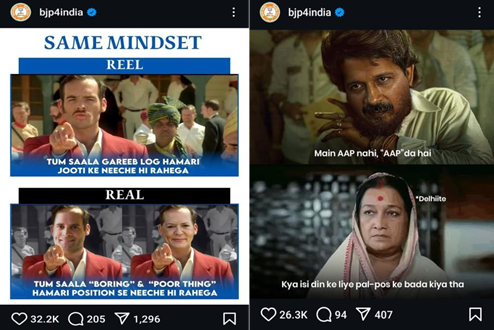
Laughing At Authority: Memes As A Tool For Political Subversion
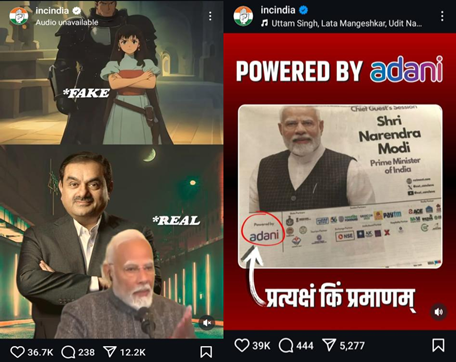
By Mahi Dahibaokar
“To remain in authority requires respect for the person or the office. The greatest enemy of authority, therefore, is contempt, and the surest way to undermine it is laughter.” – Hannah Arendt, On Violence (1970).
First introduced by Richard Dawkins in his book ‘the Selfish Gene’ a meme refers to a concept, behaviour, or piece of information that spreads from person to person, analogizing them to genes in how they replicate, mutate, and evolve. He derived “meme” from the Greek word “mimema”, meaning “that which is imitated,” blending it with the English word “gene” to create a term that emphasizes the spread and mutation of ideas. (Dawkins, 2006). Internet memes are visual and emotive forms of online communication employing popular cultural images with succinct messages to communicate. Memes are considered ideas presented as a written text that moves from one medium to another as cultural units (Shifman).
Memes have ability to simplify complex political issues and distil them into easily digestible and shareable content. Memes often employ humour, satire, and irony to convey messages, making them not only accessible but also engaging to a wide range of audiences. This accessibility has democratized political discourse, allowing individuals from diverse backgrounds to participate in discussions that might have seemed intimidating in traditional formats. Memes, therefore, serve as a bridge between political elites and the public, fostering a more inclusive and participatory political culture. (Misra 2022)
The 2023 G20 Summit saw a viral meme featuring Italian Prime Minister Giorgia Meloni and Indian Prime Minister Narendra Modi, humorously capturing their interaction. The meme gained widespread attention, even prompting Meloni to share the photo with #melodi,
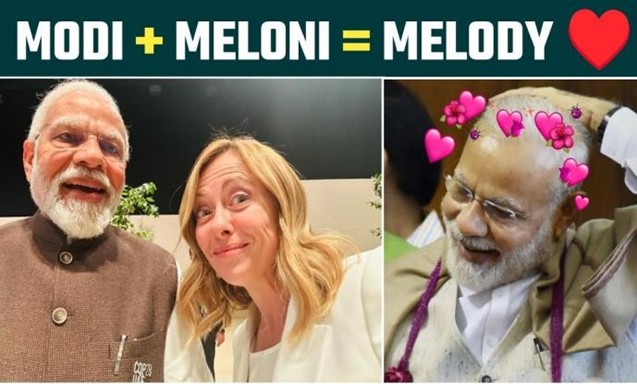
highlighting how a light–hearted meme can engage global leaders. This incident not only amused scholars but also demonstrated how memes can powerfully reflect and amplify political moments, resonating across audiences.
We have also seen meme battles being contested on the social media handles of national parties. They are used either to defame the opponent or to push the popularity of the political leader. But the flow and distribution of memes have become almost instantaneous with real-life events to an extent that sometimes it becomes difficult to decipher whether memes originate in response to political events or vice versa (Gupta, 2023). This creates doubts on whether social media conversation is politically driven actors or organically result from citizens politicized and reacting to politics and sharing their opinions through shareable content. In either case, memes have undoubtedly become an integral means of political communication, encompassing political actors, parties, civil societies, and most of all, netizens. Using humour and satire, they foster communities of like-minded individuals and spark debates on social media platforms. Satire is a crucial narrative and communicative form for thinking and caring about politics in contemporary India. (Punathambekar, 2015)
Let’s take a look at the ‘humour’ critically. For Bakhtin, laughter is a socially acceptable way for the less powerful to challenge or subvert authority. A way to take down something that is above you, presented more superior, than satirize it, take away its power and debase it. The internet is known for turning everything into a joke, and humour takes the severity and gravity away from authority, one meme at a time. It is a tool in the hands of the masses to be critical of political leaders without inviting the wrath of those in power (Chatterjee, 2020). Memes play the performative task of stimulating public discourse. As seen most recently post
Trump’s inauguration a deepfake image of President of USA kissing feet of tech giant and capitalist Elon Musk. This is a sharp intelligent political commentary where AI tools are revolutionizing the landscape of memes with its absurdity. Popularity of AI memes may be due to technological neophilia, the obsession with innovation, new technologies, and continuous hype cycles. The current- day interest in AI-generated memes stems in large part from their novelty.
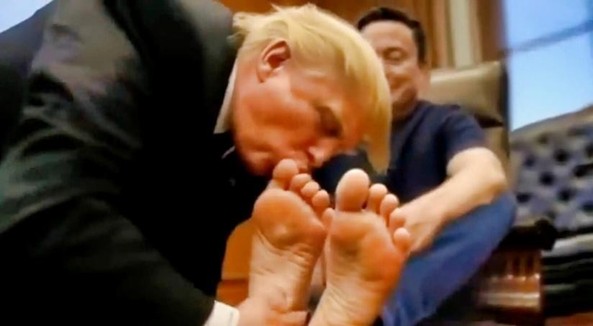
Screenshot from a Deepfake AI generated video
Through viral circulation, memes foster a kind of political community centred on shared codes of viewing/reading practices. (Baishya, 2021). Thus, memes are not just frivolous internet content but rather deeply embedded in the fabric of digital culture, serving as performative acts that evolve with each iteration and carry significant ideological weight. They are cultural moments in time that reflect and create the way we conceptualize the world. They can challenge authority, amplify oppressed voices, or even solidify stereotypes, and all while forming shared inside jokes that unite us. In their simplicity, memes carry the weight of our beliefs, biases, and communal struggles behind them, making them a strong influence upon the contemporary ideology.
Baishya uses the term “light critique” to differentiate the work of the meme from work of a political pamphlet or public speech. The meme is “light” critique in two senses—first, it is
concise and literally lightweight in its rapid dissemination and consumption. Second, it is light- hearted critique, which does not necessarily mean inconsequential critique. (Baishya, 2021). But even as a light-hearted critique, memes can engage with audience, stimulate discussion among netizens or elicit reactions. It is not merely laughing then; it is a form of laughing with community of ideological peers.
Bibliography
Ankita Chatterjee (2020) Humour in Narendra Modi memes on new media.
Baishya, A. K. (2021). The conquest of the world as meme: memetic visuality and political humour in critiques of the Hindu right wing in India. Media Culture & Society, 43(6), 1113– 1135. https://doi.org/10.1177/0163443720986039.
Dawkins, R. (2006). The Selfish Gene. Oxford University Press.
Gupta, N. K., PhD. (2023). Politics on memes and memes on politics. Economic & Political Weekly, lViii(30), 17–18.
Misra, Pritha. “The Role of Memes in Political Discourse and Public Opinion Formation: A Study”. International Journal of Cultural Studies and Social Sciences, vol. 15, no. 18, 2022,
pp. 101-108. ISSN: 2347-4777
Punathambekar, A. (2015). Satire, elections, and democratic politics in digital India. Television & New Media, 16(4), 394–400.https://doi.org/10.1177/1527476415573953
ŠKORO, I. E., BRIL, M., & Routledge, Taylor & Francis Group. (n.d.). AI CAN’T MEME?!HOW I LEARNED TO STOP WORRYING AND LOVE AI MEMES. CRITICAL MEME READER III, 265–268.
South Asian Popular Culture, 18:3, 227-245, DOI: 10.1080/14746689.2020.1815450.
About the author
Mahi Dahibaokar is a public policy graduate student at O.P. Jindal Global University. She has worked with the Vidhi Centre for Legal Policy and the Observer Research Foundation on issues ranging from urban governance to media-driven misinformation. Based in Mumbai, her interests include internet governance, algorithmic bias, and critical approaches to emerging AI technologies.

